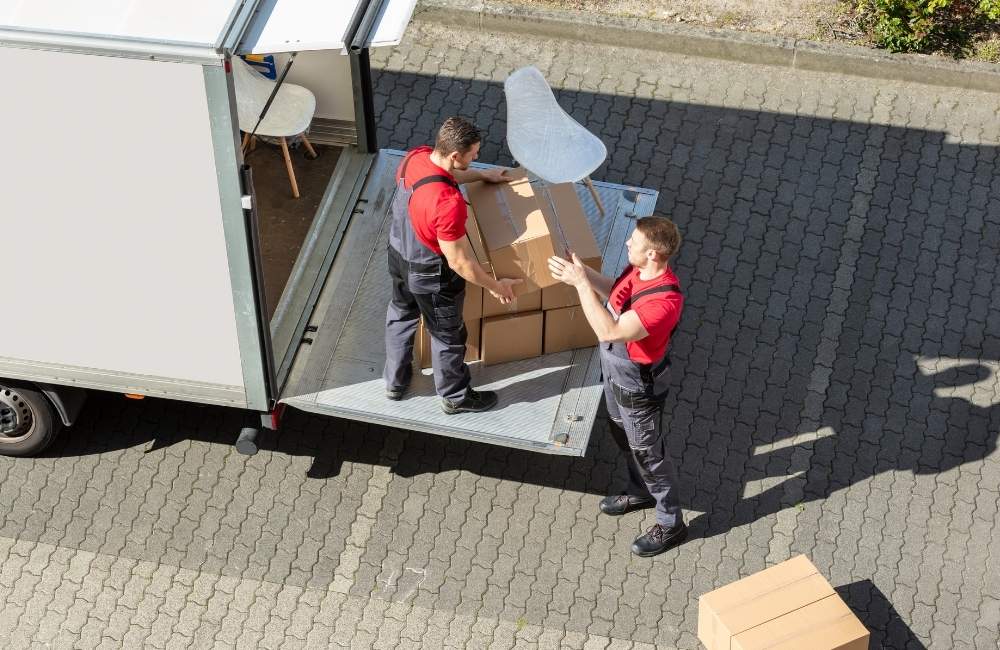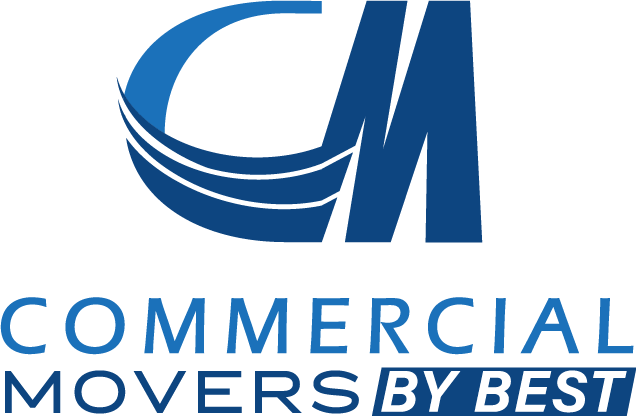Relocating an office is no small task—it demands careful planning, attention to detail, and the right resources to avoid downtime or costly mistakes. As the moving services industry in the U.S. has grown by an average of 2.4% per year from 2019 to 2024, more businesses are turning to professional office movers for support. Choosing between professional help and a DIY approach is a decision that can greatly affect the success and efficiency of any relocation.
Understanding the differences is key to making the smarter choice for any business transition.
Key Takeaways✔ Professional office movers streamline logistics, ensuring a smooth relocation process with minimal disruptions. ✔ Proper planning and scheduling by movers help businesses maintain productivity during the move. ✔ Specialized tools and techniques ensure that assets are transported safely and efficiently. ✔ Comprehensive insurance coverage protects businesses from unexpected costs or damages during the move. ✔ Flexible and scalable services from movers accommodate unique business needs, whether downsizing or expanding. ✔ Secure handling of sensitive documents and IT equipment ensures data protection and operational continuity. ✔ Post-move setup services by movers enable businesses to quickly resume operations in their new location. |
1. Experience and Skill Set
Professional office movers bring years of expertise in managing relocations of all sizes, while a DIY move relies on untrained individuals, often leading to inefficiencies. The experience of office movers allows them to handle complex tasks, such as IT equipment setup and furniture assembly, with precision. By contrast, the trial-and-error nature of a DIY move increases the likelihood of delays and damage.
| Aspect | Professional Office Movers | DIY Approach |
| Packing Efficiency | Office movers use industry-standard materials and methods to protect sensitive items during transit. They label and organize packages to ensure seamless unpacking at the new location. | DIY movers often rely on basic packing methods, which can lead to poor organization and damaged assets during the move. Packing becomes time-intensive without proper training or materials. |
| Handling Specialized Equipment | Office movers have the skills to safely transport fragile electronics, heavy furniture, and sensitive documents. Their training minimizes the risk of damage, even for complex assets like servers and modular workstations. | DIY teams lack the expertise to manage specialized equipment, increasing the risk of damage or operational delays. Improper handling can lead to costly repairs or replacements. |
| Problem-Solving Under Pressure | Professional movers anticipate challenges and implement strategies to address issues like tight timelines or space constraints. Their experience ensures smooth navigation through unexpected situations. | DIY movers may struggle to adapt to unforeseen problems, such as scheduling conflicts or equipment mishaps. A lack of expertise often leads to unnecessary stress and delays. |
2. Time Management
Office movers excel in managing time efficiently, ensuring the entire relocation process is completed within a planned schedule. In contrast, DIY moves often suffer from delays due to lack of coordination and experience, prolonging disruptions to business operations. Efficient time management is critical to minimizing downtime and maintaining productivity during a move.
| Aspect | Professional Office Movers | DIY Approach |
| Planning and Scheduling | Office movers create detailed timelines that account for packing, transportation, and setup. Their streamlined processes ensure tasks are completed on time and in proper sequence. | DIY movers often overlook the complexity of creating a detailed moving schedule, leading to missed deadlines. Poor coordination can cause unnecessary delays that disrupt business operations. |
| Packing and Loading Speed | Movers use trained teams who work efficiently to pack and load items without wasting time. Their expertise reduces packing time significantly, even for large offices. | DIY efforts can be slow, as untrained individuals often require extra time to figure out packing and loading logistics. This inefficiency results in longer moving days and delays in settling into the new space. |
| Post-Move Setup | Office movers handle unpacking and setting up furniture, workstations, and IT systems promptly, ensuring quick resumption of business activities. | DIY movers may struggle with post-move tasks, such as setting up complex equipment or arranging furniture properly. These delays extend the disruption and reduce productivity. |

3. Cost Efficiency
While DIY moves appear cost-effective upfront, hidden expenses can quickly accumulate and surpass professional moving fees. Office movers provide clear pricing that often includes materials, labor, and insurance, offering better value overall. Balancing immediate costs with long-term savings is essential when evaluating these options.
Aspect | Professional Office Movers | DIY Approach |
Material Costs | Professional movers supply high-quality packing materials like boxes, padding, and specialized crates as part of their services. This eliminates the need for businesses to purchase supplies separately. | DIY moves require buying or renting packing materials, which often ends up costing more than anticipated. Low-quality materials may also lead to damaged items, increasing overall expenses. |
Damage and Repair Costs | Movers offer insurance coverage to protect against damages, ensuring financial peace of mind. Professional handling reduces the risk of costly repairs or replacements. | Without insurance or expertise, DIY movers bear the full cost of damaged or lost items. Mishandling equipment or furniture can lead to significant repair expenses. |
Employee Productivity Loss | Office movers allow employees to stay focused on their regular tasks rather than the move, maintaining business productivity. | DIY moves often require employees to take on moving tasks, pulling them away from their primary responsibilities and leading to productivity losses. |
4. Specialized Tools and Equipment
Professional office movers come equipped with specialized tools and machinery designed for safe and efficient relocations. DIY movers typically lack access to these resources, which can result in inefficient and unsafe handling. Proper equipment is essential for protecting assets and completing the move smoothly.
Aspect | Professional Office Movers | DIY Approach |
Packing Tools | Office movers use specialized tools like bubble wrap, custom crates, and secure straps for delicate or heavy items. These tools ensure safe handling and transportation of assets. | DIY movers often rely on improvised packing solutions, increasing the risk of damage to fragile or bulky items. Limited tools make it difficult to secure items properly during transit. |
Heavy Lifting Equipment | Movers use equipment like dollies, ramps, and lift gates to move heavy furniture and equipment safely. This minimizes physical strain and ensures efficient loading. | DIY teams may lack heavy lifting equipment, relying on manual labor that increases the risk of injuries and delays. Improper lifting techniques can also damage furniture and flooring. |
Transportation Vehicles | Professional movers provide well-equipped vehicles with features like air-ride suspension to protect sensitive items during transit. Vehicles are chosen based on the size and complexity of the move. | DIY moves often involve rented trucks that lack specialized features, making it harder to secure items and protect them from damage during transportation. |

5. Liability and Insurance
Relocations come with risks like damages and injuries, making liability and insurance essential, especially as moving scams rose 35% by the end of 2023, highlighting the need to vet companies carefully. Office movers offer comprehensive coverage and assume liability for any issues during the move. In contrast, DIY moves place the entire burden of risk on the business and its employees.
Aspect | Professional Office Movers | DIY Approach |
Insurance Coverage | Professional movers include liability insurance, offering protection against damages or loss of items during the move. This ensures peace of mind for business owners. | DIY movers typically operate without insurance, meaning businesses bear the financial burden of replacing or repairing damaged items. Lack of coverage adds significant risk. |
Employee Safety | Movers are trained to handle heavy lifting and use proper techniques to avoid injuries. Businesses avoid potential liabilities associated with employee accidents during the move. | DIY moves often require employees to participate in strenuous tasks, increasing the risk of injuries. Businesses may face legal and medical expenses if accidents occur. |
Accountability and Guarantees | Professional movers provide contracts that guarantee specific timelines and services, holding them accountable for the quality of the move. | DIY efforts lack accountability, with no guarantees for timely completion or protection against mishaps. This can lead to delays and unforeseen costs. |
6. Scalability and Flexibility
Professional office movers offer scalable solutions tailored to the size and complexity of any business relocation, ensuring every aspect is handled efficiently. DIY moves lack the flexibility to adapt to large-scale or evolving needs, making them impractical for growing or downsizing businesses. The ability to scale services ensures a seamless move, regardless of the relocation’s demands.
Aspect | Professional Office Movers | DIY Approach |
Handling Large-Scale Moves | Movers have the resources and workforce to manage relocations involving multiple departments or extensive equipment. Their ability to coordinate complex logistics ensures even the largest moves are completed efficiently. | DIY teams often struggle with large-scale relocations due to limited manpower and planning expertise. The lack of organization can result in chaos and delays, especially for multi-faceted moves. |
Adaptability to Last-Minute Changes | Professional movers are equipped to handle unexpected changes, such as revised timelines or additional equipment requirements. Their flexibility minimizes disruptions and ensures the relocation stays on track. | DIY movers often lack contingency plans for unexpected issues, leading to delays and added stress. Limited resources make it challenging to adapt to changes effectively. |
Customizable Service Options | Office movers offer a range of customizable services, from packing and transportation to setup and specialized handling. Businesses can choose only the services they need, optimizing the moving experience. | DIY moves are generally all-or-nothing, with businesses handling every task themselves. This lack of customization can lead to inefficiencies and overburdening employees. |
How to Reduce Downtime During an Office Move
Minimizing downtime is essential for maintaining productivity and keeping business operations running smoothly during an office relocation. With careful planning and strategic execution, businesses can reduce disruptions and transition efficiently to the new workspace. Here are five key strategies to help keep operations on track during a move.
1. Plan the Move During Off-Peak Hours
Scheduling the relocation outside of regular business hours is an effective way to minimize operational disruptions. Many businesses choose weekends, holidays, or after-hours for moving to avoid interfering with work schedules. Office movers can coordinate logistics to ensure minimal impact, such as delivering and setting up equipment when employees are not present. This approach allows staff to return to a fully functional workspace without significant interruptions.
2. Create a Phased Moving Plan
A phased move involves relocating different departments or sections of the office in stages instead of all at once. This method allows parts of the business to remain operational while the move is underway. Office movers can help prioritize critical areas, such as IT or customer service, to ensure business continuity. Phased moves are especially beneficial for large offices or businesses with multiple teams requiring staggered setups.
3. Use Temporary Remote Work Arrangements
Enabling employees to work remotely during the transition can eliminate downtime for critical tasks. Businesses can provide employees with access to necessary tools, such as cloud-based software or remote communication platforms, to maintain productivity. Office movers can also assist in quickly setting up essential systems at the new location, allowing for a seamless return to in-office work.
4. Communicate a Detailed Timeline to Employees
Clear communication with employees about the moving timeline is crucial for ensuring everyone is prepared. Providing updates on key dates, expectations, and assigned roles during the relocation process helps reduce confusion and delays. Office movers often collaborate with management to create structured schedules and provide real-time updates, ensuring everyone stays informed throughout the move.
5. Pre-Set Utilities and Technology at the New Location
Ensuring that utilities, internet, and phone systems are fully functional before the move is vital for reducing downtime. Office movers can work with IT teams or service providers to pre-set workstations and test connections before employees arrive. This proactive approach prevents delays caused by technical issues, allowing staff to resume work immediately after relocating.
5 Benefits of Furniture Disassembly and Reassembly in Office Relocation
Furniture disassembly and reassembly are critical steps in ensuring a smooth and efficient office relocation. These processes, when handled professionally, save time, protect valuable assets, and simplify the moving experience. Here’s a closer look at the key benefits of including furniture disassembly and reassembly in an office move.
1. Streamlined Transportation
Disassembling large or bulky furniture like desks, shelves, and modular workstations makes transportation more efficient. Smaller, compact pieces are easier to pack securely, reducing the risk of damage during transit. Professional office movers use specialized tools and techniques to ensure furniture is dismantled without compromising its structural integrity, allowing for hassle-free transport to the new location.
2. Damage Prevention
Large, fully assembled furniture is more susceptible to scratches, dents, and other damage during a move. By disassembling items, movers can protect fragile components, like glass surfaces or intricate designs, with padding and wrapping. Reassembly by professionals ensures that each piece is put back together correctly, preserving its functionality and appearance.
3. Space Optimization
Disassembled furniture takes up less space in moving trucks, allowing for better organization and fewer trips. This optimized use of space not only saves time but also reduces transportation costs. Experienced office movers are skilled in packing items strategically, ensuring that disassembled pieces are loaded efficiently alongside other assets.
4. Faster Setup at the New Location
Reassembly services ensure furniture is ready for use immediately after arriving at the new office. Professional movers follow detailed instructions and use proper tools to reassemble desks, chairs, and shelving units quickly and accurately. This minimizes downtime and helps businesses resume operations sooner.
5. Enhanced Safety During the Move
Heavy, fully assembled furniture can be hazardous to move, increasing the risk of injuries to untrained personnel. By breaking items down into manageable components, movers can handle the pieces safely, reducing physical strain and preventing accidents. Professional movers are equipped with the knowledge and tools to handle this process efficiently and securely.

Frequently Asked Questions (FAQs)
How long does an office relocation typically take?
The duration of an office move depends on the size of the office, the number of items being relocated, and the complexity of the setup. Professional office movers typically provide a detailed timeline after assessing the project, ensuring every step is accounted for. Small offices may take a day or two, while larger relocations could require several days, especially if specialized equipment or phased moving plans are involved. Working with experienced office movers ensures the move is completed as efficiently as possible, minimizing downtime.
Can office movers handle confidential documents securely?
Yes, professional office movers are trained to handle confidential documents with care and security. They use sealed containers, lockable file carts, and secure packing methods to prevent unauthorized access. Many movers also offer inventory tracking systems to monitor the transport of sensitive files. Choosing reputable office movers ensures that critical documents are handled with the highest level of professionalism and discretion.
Are professional office movers equipped to handle interstate or long-distance moves?
Most office movers offer services for interstate and long-distance relocations, providing customized plans for businesses relocating far from their original location. They handle logistics, including transport permits and route planning, to ensure smooth transitions over long distances. Movers also use well-equipped trucks with features like climate control to protect sensitive items. Hiring office movers for long-distance moves eliminates the stress of managing logistics independently while ensuring timely delivery.
What happens if my office relocation is delayed?
If an office relocation is delayed, professional movers are typically prepared to accommodate changes in the schedule. They can offer flexible solutions such as short-term storage for furniture and equipment until the new office is ready. Clear communication between the business and the moving team ensures any adjustments are handled efficiently. Experienced office movers work proactively to minimize the impact of delays on business operations.
Do office movers provide post-move support?
Yes, many office movers offer post-move services, such as unpacking, reassembly of furniture, and workspace setup. Some also provide assistance with IT installation or troubleshooting to ensure all systems are operational after the move. These additional services allow businesses to settle into their new space quickly and focus on productivity. By working with comprehensive office movers, businesses can ensure every aspect of the relocation is managed professionally from start to finish.

Simplify Office Relocation with Commercial Movers By Best in White Plains, NY!
Choose Commercial Movers By Best in White Plains, NY, for efficient and professional office relocation services tailored to your business needs. Their team specializes in packing workstations, securely transporting equipment, and expertly reassembling furniture to ensure a seamless transition.
With years of experience and local expertise, they minimize disruptions and handle every detail, from logistics planning to final setup, so your business can resume operations without delay.
Let Commercial Movers By Best handle the heavy lifting and deliver a move that’s stress-free and reliable. Schedule a consultation with them today!


